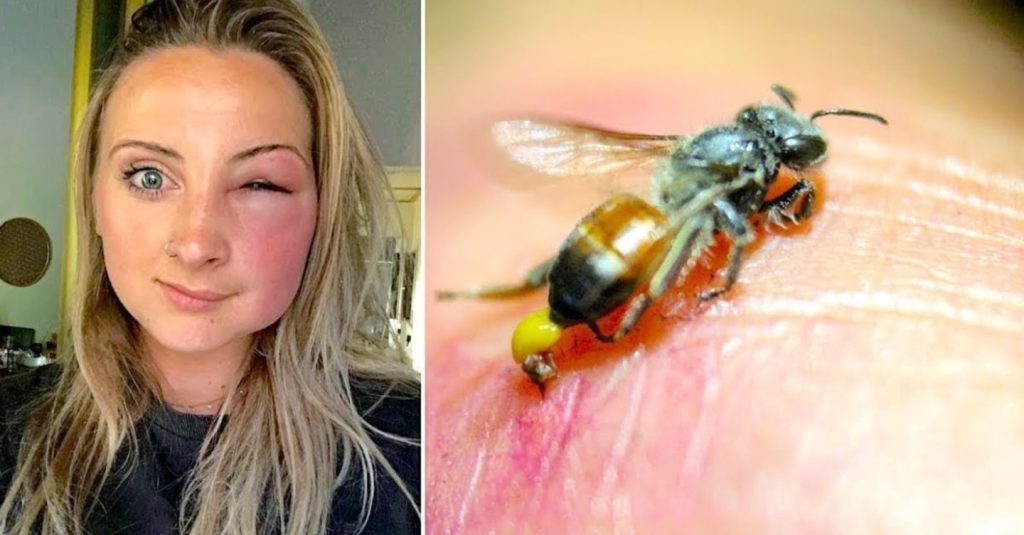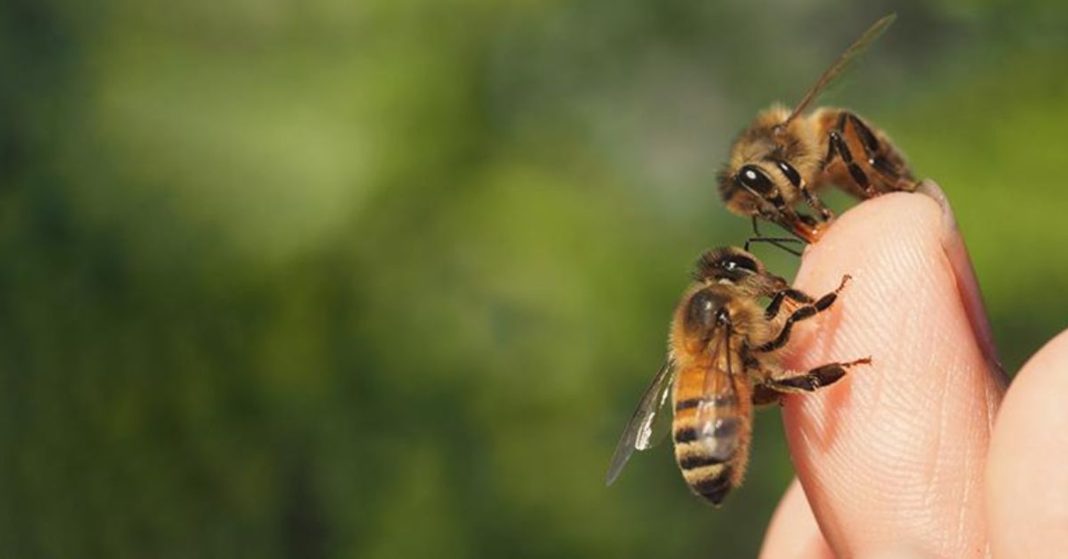When a bee stings, it may seem like a small event, but it sets off a fascinating process inside your body. This blog will help you understand what happens when a bee stings you, step by step, in an easy and informative way. Whether you’re a student, a parent, or just curious, this article is for you.
What Happens When a Bee Stings You: The Basic Idea
A bee sting is the bee’s natural defense. When it feels scared or threatened, it uses its stinger to protect itself or its hive. But the sting causes a lot of effects in our body, both outside and inside. So, what happens when a bee stings you is not just a moment of pain—it’s a complex biological event.
Why Do Bees Sting?
1. Self-Defense Mechanism
Bees sting mainly to protect themselves or their colony. If you disturb a flower they’re on, or go near their hive, they may feel unsafe and sting.
2. Protecting the Queen and the Hive
The bee hive has a queen bee, worker bees, and baby bees. Worker bees are trained to guard the hive. They may attack intruders—including humans—if they feel danger.
3. Bees Are Not Naturally Aggressive
Bees don’t want to sting unless they have to. In fact, when a honeybee stings a human, it dies afterward. So, stinging is their last resort
What Happens When a Bee Stings You: Step-by-Step Breakdown
Step 1: The Stinger Enters the Skin
When a bee stings, it pushes its barbed stinger into your skin. Honeybees cannot pull it back out, so it gets stuck.
Step 2: Venom is Released
Attached to the stinger is a venom sac. Even after the bee flies away (and often dies), the venom sac keeps pumping venom into your skin for up to 1 minute.
Step 3: Body’s Immune Reaction Starts
Your body sees the bee venom as a harmful substance. So, it sends white blood cells to the area. This causes:
- Redness
- Swelling
- Pain
- Warmth
- Itching
This is your body’s way of fighting back.
What Happens When a Bee Stings You: Types of Reactions
1. Normal Reaction
In most cases, the reaction is mild and temporary. You may feel:
- A sharp sting
- A red bump
- Mild swelling and itching
These symptoms usually go away in a day or two.
2. Large Local Reaction
Some people have a bigger reaction. The swollen area may become:
- Larger than 10 cm
- Warm and red
- Painful for several days
Still, this is not usually dangerous.
3. Severe Allergic Reaction (Anaphylaxis)
This is rare but serious. Some people’s immune systems overreact to the venom. Signs of anaphylaxis include:
- Swelling of the lips, face, or throat
- Difficulty breathing
- Dizziness or fainting
- Rapid heartbeat
- Nausea or vomiting
This is a medical emergency. The person needs an epinephrine injection and should be taken to a hospital immediately.

What Happens When a Bee Stings You: First Aid Treatment
Step 1: Remove the Stinger
- Use a flat object (like a card or nail) to scrape it out.
- Do not use tweezers or pinch the stinger; that may push in more venom.
Step 2: Clean the Area
- Wash the sting site with soap and water.
- This reduces the chance of infection.
Step 3: Reduce Swelling and Pain
- Apply a cold pack or ice wrapped in cloth for 15-20 minutes.
- Keep the sting area raised if on an arm or leg.
Step 4: Use Medicines for Relief
- For pain: Paracetamol or ibuprofen.
- For itching: Antihistamine (like cetirizine or loratadine).
- For skin swelling: Hydrocortisone cream.
Step 5: Watch for Signs of Allergy
Monitor the person for 30–60 minutes. If serious symptoms appear, get medical help quickly.
What Happens When a Bee Stings You: Long-Term Effects
Most people recover fully within a day or two. However:
- If the sting becomes infected, the area may get worse.
- People allergic to bees may need to carry an epinephrine auto-injector.
- Some may undergo allergy shots to reduce future risks.
How to Prevent Bee Stings
To avoid the question of what happens when a bee stings you, try to prevent stings:
1. Stay Calm Around Bees
Do not scream or wave hands. Bees may feel threatened and attack.
2. Avoid Wearing Bright Clothes and Strong Perfumes
Bees are attracted to bright colors and sweet smells.
3. Wear Protective Shoes Outdoors
Walking barefoot in gardens or grass increases risk of stepping on a bee.
4. Do Not Disturb Hives
Never touch or shake a beehive, tree hole, or wall opening where bees are active.
Interesting Facts Related to Bee Stings
- Only female bees have stingers.
- Honeybees sting once; wasps and hornets can sting multiple times.
- Bee venom is used in medical research and even in some skincare products.
- Bees are important for pollination and help in growing fruits and vegetables.
What Happens When a Bee Stings You: Educational Conclusion
So, what happens when a bee stings you is more than just pain—it’s a small battle between your body and the bee’s venom. For most people, it is a harmless event that causes mild swelling and pain. But for a few, it can become a serious allergic reaction. That’s why understanding how bee stings work, how to treat them, and how to avoid them is very important for both children and adults.
FAQs: What Happens When a Bee Stings You
Q1. Why do bees die after stinging?
Only honeybees die after stinging because their stinger gets stuck in human skin and tears out of their body.
Q2. Can a bee sting be dangerous?
Usually no, but in people with allergies, it can be life-threatening and needs emergency care.
Q3. What should I do immediately after a bee sting?
Remove the stinger, clean the area with soap and water, apply ice, and monitor for any allergic symptoms.
Q4. Do bees sting more than once?
Honeybees sting only once. Wasps and hornets can sting many times.
Q5. Can children recover quickly from bee stings?
Yes, if the child is not allergic, they usually recover in one or two days with simple treatment.




